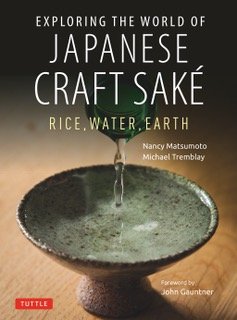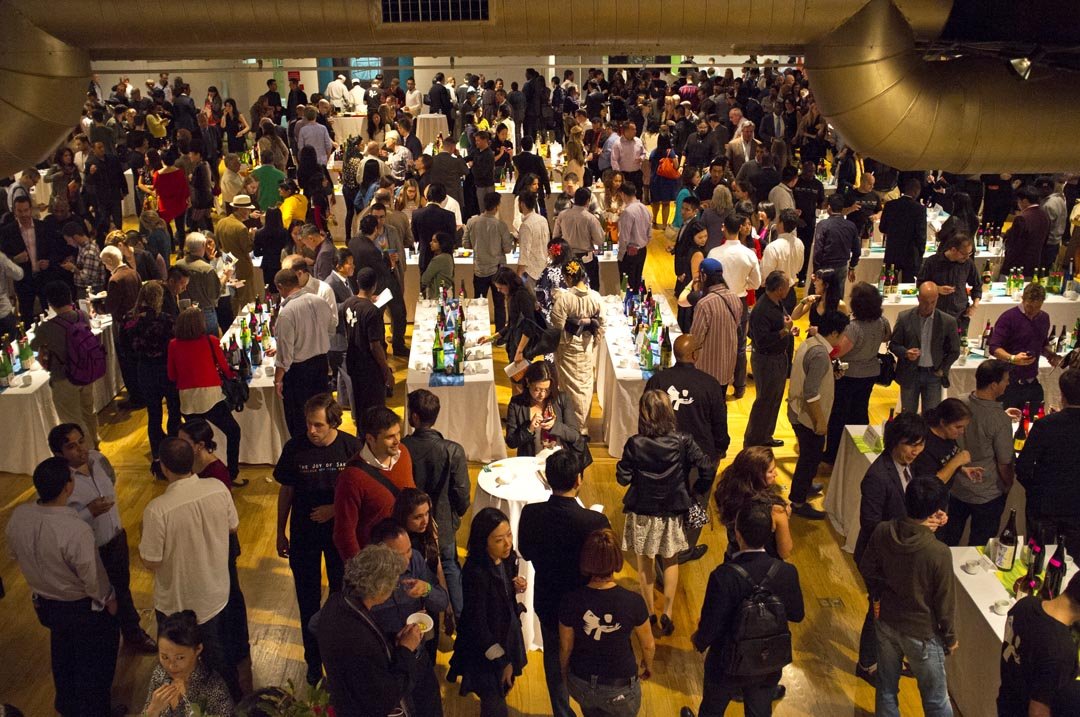Joy of Sake NYC Returns!
Photos courtesy of Joy of Sake.
Good news, sake fans! After a three-year-absence, New York City’s largest and most high-profile sake tasting event is returning in August.
The 17th annual Joy of Sake event will take place at Manhattan’s Metropolitan Pavilion on Thursday, August 4th, from 6:30 to 9:30 pm. Admission will give visitors access to 576 different sake labels—all of which were submissions to the 2021 U.S. National Sake Appraisal—as well as sake-themed appetizers from 15 different Japanese restaurants. Click here to see all of the 2021 submissions, which serves as preview of what you’ll be able to sample at the event.
On sale at Joy of Sake!
And even more good news: I will be on hand at my own table to sign and sell copies of Exploring the World of Japanese Craft Sake: Rice, Water, Earth. Although my co-writer, Michael Tremblay, is unable to make the trip, you can meet another sake celebrity at the table, sake and wine expert and writer Anna Lee Iijima! So please stop by, say hello, and buy a book or three if you have not already.
I have attended several previous Joy of Sake events in Manhattan and can say that they are an unparalleled sake tasting opportunity. “There’s nothing quite like The Joy of Sake,” says event organizer Chris Pearce. “It’s an annual celebration that unites people through their love of sake, and is carefully curated to ensure that guests learn a lot about sake and thoroughly enjoy themselves at the same time. The last one was June 21, 2019 and it’s great to be back after a three-year pause.”
Asked what might be new or different this year, he replies, “It’s like making sake. You don’t so much try to do something ‘new’ as to do something better. We’ve reduced the attendance by twenty percent, so there’s more space to move around and (we hope) no lines for the appetizers.” (If this year anything like previous years, the food will be so good you’ll be torn between your desire to taste sake and sample the offerings of a stellar list of New York City Japanese restaurants.)
Pearce adds, “There’s a sake information booth this year. The tasting tables are set up as ‘islands’ with sake stewards inside to answer questions. You’ll also see some ‘sake sensei’ walking around in their distinctive indigo maekake aprons.”
These changes should go a long way in making the event more navigable and less overwhelming, especially to the first-time attendee. Still, I felt that visitors could use a little more advice from Pearce on how to approach the event in a way that would maximize fun and as well as the educational aspect of the Joy of Sake experience.
“There is always a lot of interest in the daiginjo labels,” he says. “I usually start at the ‘Daiginjo B’ tables, because there seems to be more individuality there than with ‘Daiginjo A.”
Pearce explains, “The Daiginjo A sakes have a polishing ratio of 40%, and lately many entries are polished more than that. They are mostly striving for gold awards at the Japan National Sake Appraisal. There are some boxes you have to check off to have a decent chance of getting a good score. High on the list is strong ginjoka (fruity aroma often associated with low polishing ratios), which usually brings with it high glucose (sweetness) content. As a result, many entries have quite similar taste/aroma profiles.
“Daiginjo B entries with 45% or 50% polishing ratios have more variety in terms of individual brewery expression because they are not striving for the Appraisal ideal. The price for Daiginjo B is about half of Daiginjo B. The brewers are trying to deliver a satisfying daiginjo experience, in line with their regular brewing practice, at a reasonable price. There are always some interesting surprises.”
After the Daiginjo B table, Pearce says, “I might head to one of the junmai tables, where the sakes tend to be more down-to-earth. Then I’d help myself to an appetizer or two, and mosey around. You get in the mood of the event after a while, so just go with the flow.”
At my first Joy of Sake event many years ago, Pearce told me that while newcomers to sake are often initially attracted to the highly floral, aromatic and polished junmai daiginjos, after getting to know sake better many gravitate toward more food-friendly and less polished junmai sakes. This time, his advice focuses on award- versus non award-winning sakes.
“Don’t feel that you have to make a beeline to all of the award winners only. I’ve found some really interesting sakes that did not win gold or silver awards at the Appraisal. Every year you come across a new favorite.” This is good advice. Remember that the judges are human, and are tasked with tasting a large number of sakes over three long days. Everyone’s taste in sake differs as well, so try to be open minded, pay close attention, and go with what your instincts are telling you.
Those looking for new innovations might want to pay attention to the categories of yamahai sakes, aged sakes, and the presence of some blended sakes. A good example of the trend toward more complex yamahais is Yoshidagura ‘U’ in the junmai category, which has taken home gold for the last three years. Yoshida Brewery, well-known for its brand Tedorigawa, is the Ishikawa Prefecture brewery that was featured in the popular sake documentary The Birth of Sake.
Pearce notes that there will be some brewers from Japan present at Joy of Sake to pour sake from sponsor booths that are placed around the pavilion. However, with Covid numbers still high in Japan, there will not be quite as many as in pre-pandemic 2019. Travel restrictions are still in place, he explains, and before returning to Japan, visiting brewers have to test negative for Covid before boarding their flight. For those who can’t afford a delay of up to several weeks, that can be reason enough not to make the trip.
The pandemic period has been hard on sake brewers, and on the hospitality industry in general due to aggressive government bar and restaurant shutdowns. “I’ve heard of some breweries that have used the down time to make improvements in their brewing process. That’s a plus, but it’s going to take some time for things to return to normal,” says Pearce.
Many breweries are projecting a return to pre-pandemic production levels in the coming brewing year (Oct. 1, 2022 - Sept. 30 2023), but Pearce notes that restaurant- and bar-going in Japan has not fully returned; the sake business could be in better shape.
I take this as a call for all of us sake fans to make a concerted effort to support the breweries we love, and head to Joy of Sake to discover some new favorites we can add to our regular sake rotation. Have fun, and let me know what you discover!
If you liked reading this post, click on the pink box above or below it and subscribe to get future posts in your inbox!











